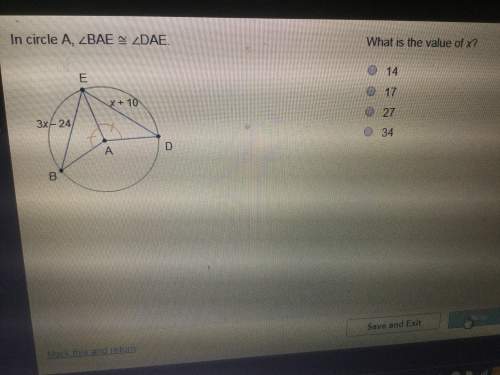
Mathematics, 11.12.2019 22:31 21hendlill
Examine the following hypothesis test with n = 16, s = 7, and x = 26. h0: μ ≥ 32 ha: μ < 32 α = 0.005
a. state the decision rule in terms of the critical value of the test statistic.
b. state the calculated value of the test statistic.
c. state the conclusion.
a. state the decision rule. select the correct choice below and fill in any answer boxes in your choice.
a. reject the null hypothesis if the calculated value of the test statistic, t, is less than the critical value of otherwise, do not reject.
b. reject the null hypothesis if the calculated value of the test statistic, t, is greater than the critical value of otherwise, do not reject.
c. reject the null hypothesis if the calculated value of the test statistic, t, is less than the critical value of or greater than the critical value of otherwise, do not reject.
b. state the calculated value of the test statistic. t =
c. state the conclusion. choose the correct answer below.
a. do not reject the null hypothesis. there is sufficient evidence that the mean is less than 32.
b. do not reject the null hypothesis. there is not sufficient evidence that the mean is less than 32.
c. reject the null hypothesis. there is not sufficient evidence that the mean is less than 32.
d. reject the null hypothesis. there is sufficient evidence that the mean is less than 32.

Answers: 2
Another question on Mathematics

Mathematics, 21.06.2019 14:30
Which statement about the relative areas of ? abc and ? xyz is true? the area of ? abc > the area of ? xyz the area of ? abc < the area of ? xyz the area of ? abc = the area of ? xyz more information is needed to compare.
Answers: 2

Mathematics, 21.06.2019 17:00
Need this asap if anyone can i would be very grateful. if you could show workings that would really
Answers: 1

Mathematics, 21.06.2019 17:30
Lems1. the following data set represents the scores on intelligence quotient(iq) examinations of 40 sixth-grade students at a particular school: 114, 122, 103, 118, 99, 105, 134, 125, 117, 106, 109, 104, 111, 127,133, 111, 117, 103, 120, 98, 100, 130, 141, 119, 128, 106, 109, 115,113, 121, 100, 130, 125, 117, 119, 113, 104, 108, 110, 102(a) present this data set in a frequency histogram.(b) which class interval contains the greatest number of data values? (c) is there a roughly equal number of data in each class interval? (d) does the histogram appear to be approximately symmetric? if so,about which interval is it approximately symmetric?
Answers: 3

You know the right answer?
Examine the following hypothesis test with n = 16, s = 7, and x = 26. h0: μ ≥ 32 ha: μ < 32 α...
Questions

Chemistry, 16.10.2020 06:01



English, 16.10.2020 06:01

Mathematics, 16.10.2020 06:01

Spanish, 16.10.2020 06:01

Computers and Technology, 16.10.2020 06:01

Mathematics, 16.10.2020 06:01


Health, 16.10.2020 06:01

History, 16.10.2020 06:01

Physics, 16.10.2020 06:01

Social Studies, 16.10.2020 06:01

Mathematics, 16.10.2020 06:01


Mathematics, 16.10.2020 06:01

Mathematics, 16.10.2020 06:01

Biology, 16.10.2020 06:01


Social Studies, 16.10.2020 06:01




